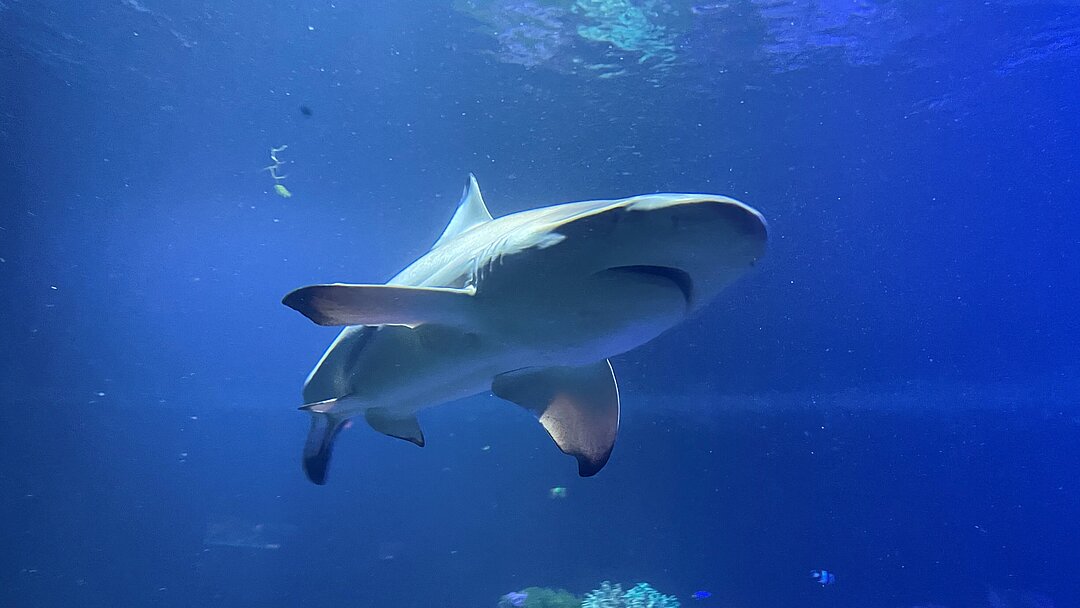
The two blacktip reef sharks are currently exploring their new home in the shark tank at the aquarium, where they have over 100,000 litres of salt water to swim in. The newcomers are also getting to know their tank mates - a large laced moray and a variety of smaller reef dwellers.
Born in August 2020 at SeaLife Oberhausen, the duo are two sisters. They arrived at Hellabrunn Zoo under the EAZA Ex-situ Programme (EEP), which successfully breeds blacktip reef sharks in European zoos and aquariums and transfers them between these institutions to create a reserve population for this species. The two young females will grow up in the Munich aquarium, where they will serve as ambassadors for their species in the wild, making visitors aware of the need to protect these animals and their habitat. The species is under threat in its native habitat, the tropical coral reefs of the Indian Ocean coastal regions and western central Pacific Ocean archipelagos, due to habitat destruction and water pollution, as well as hunting for food. The Blacktip reef shark is therefore listed as Vulnerable on the IUCN Red List.
In addition to the blacktip reef sharks, Hellabrunn Zoo also has other charismatic newcomers in the aquarium: Two male coral catsharks moved into the neighbouring tank at the same time the blacktip reef sharks arrived. The catsharks are about 70 cm long with a very slender body featuring numerous white spots on a brownish background and angled backwards dorsal fins. Typically bottom-dwelling fish, they are mostly found near the coast, where they feed on fry, shrimp, smaller fish, snails and mussels. Their arrival represents the introduction of a new shark species at the zoo.
"By taking in the two male coral catsharks, Hellabrunn is supporting the European monitoring programme for this fish species, which has now been classified as Near Threatened by the IUCN. The habitat of these sea creatures in the Pacific is being increasingly destroyed by human activity, which is having negative effects on the entire population,” says Lena Bockreiss, zoologist and curator at Hellabrunn Zoo. "In addition, we plan to socialise the two coral catsharks with two male epaulette sharks in the near future, which will complement the marine population of the shared western South Pacific habitat in a meaningful way."
Zoo director Rasem Baban adds: "As a scientifically-led zoo, it is very important to us to care for increasingly threatened and endangered species at Hellabrunn and to work closely with the European conservation breeding and monitoring programmes. We are also in the process of upgrading our educational signage in the Hellabrunn Aquarium. The displays will be equipped with better monitors and provide information about the species in simple language to improve accessibility.”